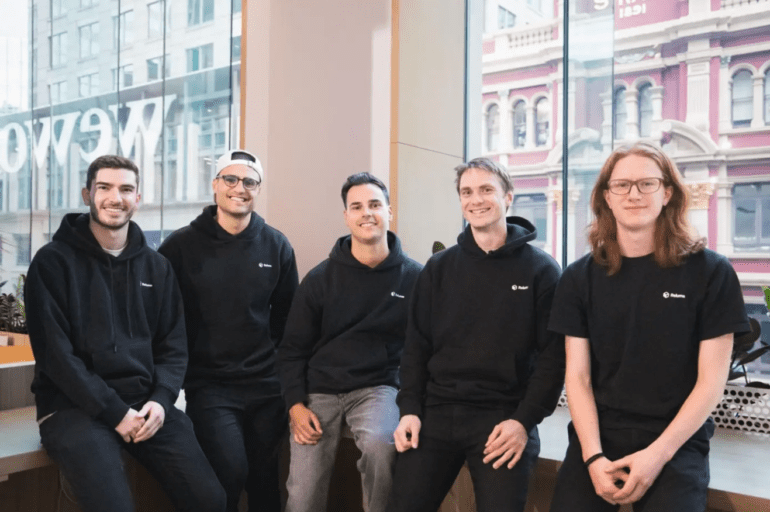TL;DR:
- Relume, an AI web builder, defies VC funding trends, relying on bootstrapping since 2021 launch.
- Originating as a component library for Figma and Webflow, Relume offers customizable web elements.
- Integration of generative AI in August enhances Relume’s capabilities, facilitating rapid sitemap and wireframe creation.
- AI-trained in-house using OpenAI’s language model, Relume attracts 54,000 users, with 10,000 joining post-AI launch.
- Platform targets freelancers and design agencies, maintaining a 90% retention rate.
- Relume augments designers, automating 70% of tasks while allowing manual input for stylistic decisions.
- Differentiating from rivals, Relume builds atop established design systems, fostering a strong user base.
- Slack community of 4,500 members fosters engagement and feedback exchange.
- Relume envisions future external funding aligned with strategic growth and design platform expertise.
Main AI News:
In a landscape where venture capital flows abundantly into startups riding the waves of generative AI innovation, Relume has charted a divergent course. Despite the $14 billion equity funding frenzy propelling AI breakthroughs, Relume boldly strides as a bootstrapped entity, shunning external investments since its inaugural voyage in November 2021.
Dan Anisse, the co-founder of Relume, elucidated, “Our focus revolves around crafting a product with inherent value. Bootstrapping propels us toward refining our product’s essence,” in a candid dialogue with TechCrunch.
Originating in Sydney, Relume embarked as a component haven for web design behemoths Figma and Webflow, gifting them an arsenal of over a thousand customizable building blocks. These components, encompassing content, navigation bars, footers, and other modular fragments, seamlessly traverse websites. When the ChatGPT epoch transpired, bestowing a worldwide buzz, the Relume ensemble, akin to several productivity tools, embarked on a ruminative journey, contemplating AI’s augmentation prowess.
August bore witness to Relume’s design platform metamorphosis, now entwined with generative AI marvels. Envision a scenario where a textual prompt unveils a website’s essence – “XYZ: The Gastronomic Odyssey Delivering Local Harvest to Your Doorstep within Hours.” Swiftly, the AI brushes a malleable sitemap onto the canvas, ready for refinement at a click’s behest.
Transitioning from “sitemap” to “wireframe” empowers users to envision their nascent domain. Armed with its algorithmic virtuosity, Relume adorns the wireframe with components drawn from its repository, affording users latitude for visual manipulation. Akin to magic, a fully-functional website materializes.
Relume meticulously nurtures its proprietary web-building AI, harnessing OpenAI’s expansive language model for prompt interpretation. As AI-spurred textual expositions harmonize with site code, real-time transformation transpires, with the textual becoming the visual.
The tally of Relume adherents burgeons – an impressive 54,000 to date, with 10,000 swelling the ranks post-AI feature debut a mere fortnight ago. Orchestrated by a cadre of seven luminaries hailing from bastions like Canva and Antler, the platform boasts a retention rate hovering around 90%, a testament to its allure. Priced from $32/month, the venture targets individuals, freelancers, and web design ateliers, ushering in a tide where “up to ten websites a month” eclipses the erstwhile ceiling of three.
Conversely, Relume doesn’t aim for AI omnipotence, reserving a realm for designers to flourish. Anisse underscores this, asserting, “We grant designers 70% of the blueprint, leaving 30% to manual finesse.” This territory encompasses crafting style guides, distilling the font, palette, backgrounds, hues, images – quintessentially human-mediated choices.
The refinement extends to platforms like Figma and Webflow. Harmonizing with these popular design engines, Relume projects integrate seamlessly, channeled into a compatible format via web plug-ins. Here, users orchestrate myriad modifications, sculpting button forms, shades, and contours.
In a burgeoning domain saturated with design tools kindling their affair with generative AI – from the titans like Wix to fresh contenders such as Universe – Relume carves a distinct niche. Anisse elucidates, “While others aim to dismantle, we augment existing design frameworks.” Anchored in mature ecosystems, the venture navigates a surging user base, yet is mindful of the tether that may be severed by dominants.
A strategic gambit, as underscored by the founder. Relume garners acclaim from the likes of Webflow’s CEO, echoing beyond Twitter’s confines. Anisse remains unshaken by potential imitators, opining, “Resource-fueled engineering may breed replication, but our fortress is the community that resonates.” Challengers must laboriously forge a component library, training it anew.
Today, Relume’s Slack haven teems with 4,500 ardent members. Dialogues range from job prospects to project critiques, fostering an ecosystem thriving on shared insights from design virtuosos.
While the mantle of funding isn’t sought presently, Relume doesn’t eschew the future prospect. Anisse aspires for alliances that “strategically fortify” and “comprehend design platform dynamics.” In the evolving saga of Relume, the blueprint remains woven with AI, growth, and the persistent quest for design empowerment.
Conclusion:
Relume’s steadfast journey without conventional VC backing underscores its commitment to a valuable product. Its AI infusion, adeptly trained in-house, has propelled user engagement and streamlined web design. This approach, coupled with its strategic embrace of established design ecosystems, bodes well for Relume’s positioning in a market where the coalescence of AI and design is becoming increasingly critical.

